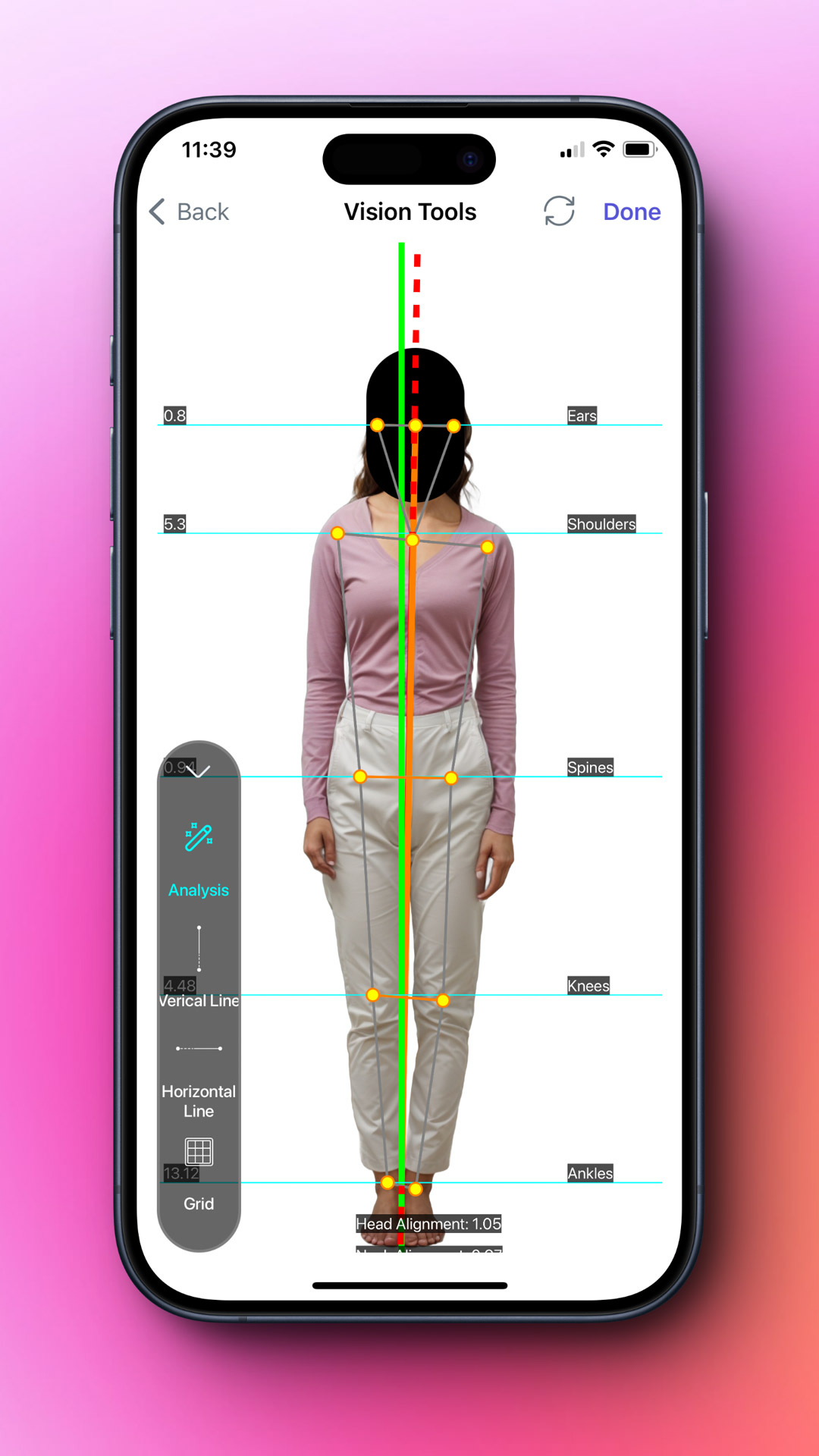
Understanding uneven shoulder
Uneven shoulders, also known as shoulder asymmetry, is a condition where one shoulder appears higher
or lower than the other.
A variety of factors can cause uneven shoulders, and it's often a combination of these factors that
contributes to shoulder asymmetry.
Some common causes include:
• Muscle imbalances cause uneven shoulders.
• Poor posture, like slouching, leads to shoulder asymmetry.
• Scoliosis
• Leg length differences affect shoulder alignment.
• Past shoulder trauma.
• Repetitive one-sided tasks in certain jobs contribute to uneven shoulders.
Symptoms:
• Visibly higher or lower position of one shoulder.
• Possible discomfort or pain in the shoulder, neck, or back.
• Reduced mobility or stiffness on one side.

To analyze uneven shoulders, first capture or upload required photos using the shoulder analysis feature within the FlexiTrace posture analysis app.
Select the detailed report to see calculated angles and alignments in pdf file. Finally, press the Add to history button in the bottom to save the data and assign it to your subject's profile and see the detailed results in history section.

| All Rights Reserved | FlexiTrace Developers LTD